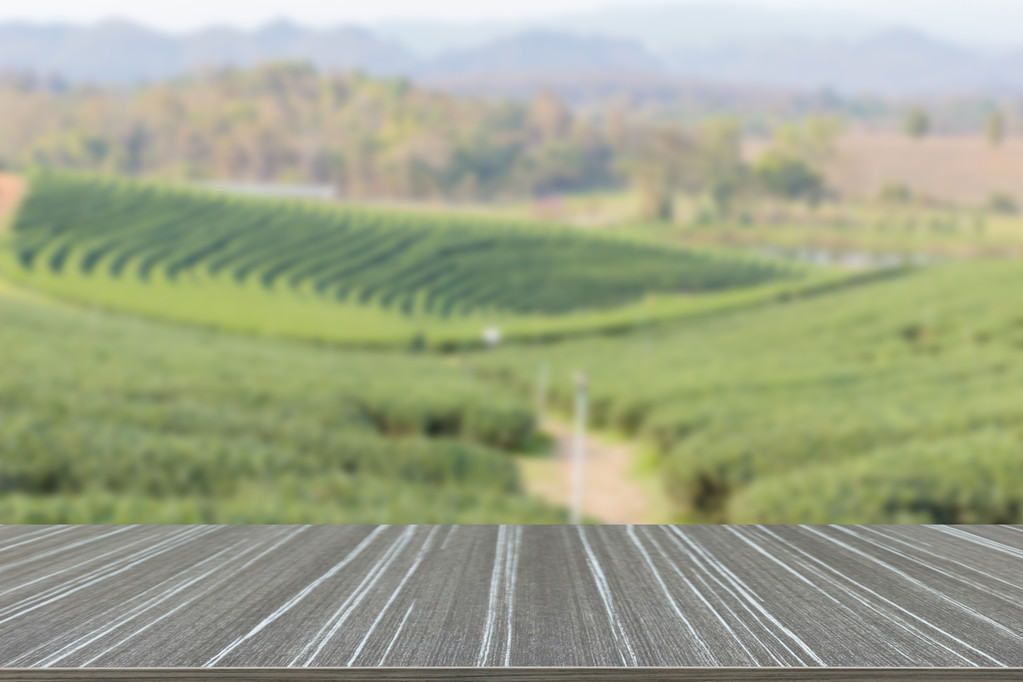Oolong tea is a Chinese specialty. It combines the flavors of green and black tea to create a whole new flavor. You can find out everything you need to know about the hot drink from China here.
Oolong tea: a Chinese specialty
Oolong tea is a semi-oxidized tea from China. It is made in a similar way to black tea. With oolong tea, however, the oxidation is stopped prematurely, so that the tea leaves are only half-oxidized. The short oxidation time creates a more floral note, while a long oxidation provides a more intense taste. Depending on the type of oolong, this can create a very unique aroma: the taste ranges from green tea (not oxidized at all) to black tea (completely oxidized).
Oolong originally means black dragon. In Chinese mythology, this is often depicted as being elongated and twisted, making it very similar to the oolong tea leaves. The special leaf shape is well known among tea lovers and has become the trademark of oolong tea.
Origin and growing conditions
The history of oolong tea can be traced back to the 14th century. The specialty originally comes from China. There, the tea variety is mainly grown in the mountains of Fujian. The Chinese monks in Fujian developed the classic production method of oolong tea as early as the 16th century. From Fujian, the new tea variety spread across China to Taiwan. The most famous cultivation areas are still in the mountains of Taiwan.
Oolong tea is produced in many complex steps. Depending on the variety, you have to vary the sequence, duration and temperature of the individual processes.
The harvest of the oolong tea still takes place exclusively by hand. The larger tea leaves in particular are picked because they contain more tannins. These ingredients give the tea its classic mineral note.
Immediately after harvesting, the tea leaves are dried in the fresh air. They begin to wilt slightly.
During oxidation (formerly called fermentation), the tea leaves are repeatedly rubbed and shaken. This squeezes cell sap out of the leaves. The escaping juice oxidizes with the oxygen from the surrounding air. The duration of the squeezing and shaking determines the degree of oxidation.
To stop oxidation, the leaves are heated.
In the next step, the still moist tea leaves are rolled by hand or machine. This destroys the cell structures and further cell juice can escape.
The oolong tea is then roasted and thus dried and preserved. The duration and temperature depend on the degree of roasting and thus the taste of the tea.
Oolong tea and its special effects
Oolong tea has been a very popular drink in China for centuries. But not only its unique taste is responsible for this. The Chinese classic can also convince with its rich ingredients. The following examples show you how versatile the effect of oolong tea is:
Traditionally, oolong tea in China is served with greasy meals. This is due to its activating effect. Oolong tea is said to stimulate the production of fat-splitting enzymes and contribute to an increased metabolism. Fats can supposedly be digested better this way. Therefore, oolong tea is particularly recommended for diets.
Oolong tea contains a particularly large number of secondary plant substances that have an antioxidant effect. The antioxidants help bind free radicals in the body. This should also slow down the aging process and strengthen the immune system.
Due to the low acid content in oolong tea, it is gentle on the stomach and is particularly well tolerated.

Preparation: This is how your oolong tea succeeds
In order to prepare oolong tea correctly, you have to dose it correctly and pay attention to an appropriate water temperature and steeping time. For example, if the tea steeps too long, it can quickly become bitter.
In order for the taste of the oolong tea to develop optimally, you should consider the following points:
The dosage of oolong tea is a matter of taste. Basically, however, you have to dose the tea lower than, for example, green tea. Too much will make it bitter. Depending on the variety, the dosage recommendations may vary. A heaped teaspoon per cup (250 milliliters) is recommended as a rough guide.
The tea leaves can only develop their flavor optimally if they have enough space. You should therefore avoid using a tea infuser or classic tea bags. It is advisable to put the loose tea leaves directly into the teapot.
The water temperature should be around 80 to 95°C when you infuse the tea. Only through the heat can the ingredients of the oolong tea dissolve and develop the typical taste.
If you’re only going to infuse the tea once, you want it to steep for 2-3 minutes. Traditionally, however, oolong tea is infused up to eight times. The brewing time is about one minute.
Tip: Pouring out the tea several times is time-consuming, but worth it. Up to three infusions intensify the aroma of the oolong tea. After more than three repetitions, the intensity decreases again. Depending on your taste, you can infuse the tea as often as you like and at the same time have some of the tea leaves for longer.

